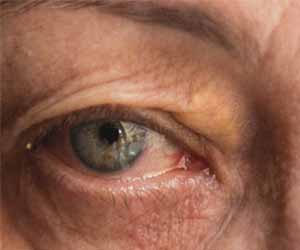- Home
- Editorial
- News
- Practice Guidelines
- Anesthesiology Guidelines
- Cancer Guidelines
- Cardiac Sciences Guidelines
- Critical Care Guidelines
- Dentistry Guidelines
- Dermatology Guidelines
- Diabetes and Endo Guidelines
- Diagnostics Guidelines
- ENT Guidelines
- Featured Practice Guidelines
- Gastroenterology Guidelines
- Geriatrics Guidelines
- Medicine Guidelines
- Nephrology Guidelines
- Neurosciences Guidelines
- Obs and Gynae Guidelines
- Ophthalmology Guidelines
- Orthopaedics Guidelines
- Paediatrics Guidelines
- Psychiatry Guidelines
- Pulmonology Guidelines
- Radiology Guidelines
- Surgery Guidelines
- Urology Guidelines
Low estrogen and fewer menstruating years linked to Sjögren Syndrome in women

USA: Women with Sjogren Syndrome have a lower lifetime exposure to estrogen and cumulative menstrual cycling (CMC) -- measured as years menstruating minus time pregnant, finds a recent study published in the journal Arthritis Care & Research. In other words, women who have lower estrogen levels and who have fewer years menstruating have a higher likelihood of developing primary Sjogren’s.
Sjögren Syndrome also called pSS is an auto-immune disorder that affects the moisture glands of the body, especially eye and mouth. The condition often accompanies other immune system disorders, such as rheumatoid arthritis and lupus. In Sjogren’s syndrome, the mucous membranes and moisture-secreting glands of your eyes and mouth are usually affected first — resulting in decreased tears and saliva.
Sara S. McCoy, a rheumatologist with the University of Wisconsin School of Medicine and Public Health, and colleagues conducted the study to test whether cumulative estrogen exposure, as determined by age at menarche, age at menopause, female hormone use, hysterectomy, and parity, has an effect on the development of primary Sjögren's syndrome (pSS).
“Our findings suggest cumulative estrogen exposure may have a modulating effect on factors that predispose women to autoimmune disease,” said McCoy. “In the case of primary Sjögren’s Syndrome, lower cumulative estrogen exposure appears to augment the clinical expression of disease.”
For the study, the researchers examined reproductive and menstrual factors in 1,320 women with primary Sjögren’s Syndrome and 1,360 women who only experience the dryness associated with this condition but no other symptoms. They included the age of the first period and the age of menopause, as well as the number of full-term pregnancies and miscarriages. They also included any use of female hormones and hysterectomy history.
Also Read: Infection linked with risk of developing Sjögren Syndrome, finds a study
Key findings of the study include:
- Women with primary Sjögren’s Syndrome had a significantly reduced cumulative estrogen exposure when compared with women who only experienced dryness.
- Women with primary Sjögren’s who had the highest estrogen levels did have a statistically-significantly reduced risk for abnormal cornea changes, increased immunoglobulin, rheumatoid factor, and anti-Sjögren’s antibodies when compared to women with lower estrogen levels. They did, however, have an increased arthritis risk.
- Women with more cumulative years menstruating experienced an inverse association with inflammatory arthritis, but those cumulative years showed no association with anaemia, increased immunoglobulin, rheumatoid factor, or anti-Sjögren’s antibodies.
- Fewer menstruating years could play a role in the development of dry eye or dry mouth symptoms, making it harder for clinicians to pinpoint women with primary Sjögren’s.
Also Read: Patients of Sjogren’s syndrome have increased CV risk
"Women with pSS have lower estrogen exposure and CMC compared to controls. Increasing estrogen exposure was negatively associated with pSS development. Further longitudinal studies of sex hormone exposure in pSS are needed to confirm these findings," concluded the authors.
To read the complete study log on to https://doi.org/10.1002/acr.24014

Disclaimer: This site is primarily intended for healthcare professionals. Any content/information on this website does not replace the advice of medical and/or health professionals and should not be construed as medical/diagnostic advice/endorsement or prescription. Use of this site is subject to our terms of use, privacy policy, advertisement policy. © 2020 Minerva Medical Treatment Pvt Ltd